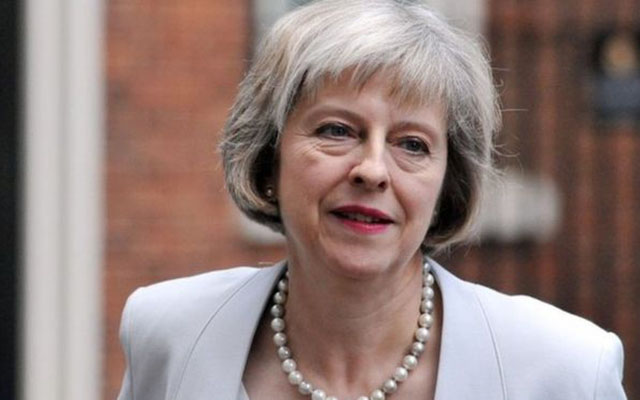Breaking the cycle of child poverty
Jecob Nyamadzawo Our Children, Our Future
The past articles on child poverty in Zimbabwe have clearly defined it, presented the facts and some action points. As I reflect on these articles, what is very clear to me is that child poverty is like a life sentence.
Yes, that is what it is, because children born in poverty are highly likely to grow up in poverty and bear children who will, most likely suffer the unfortunate fate of living in poverty.
It becomes a vicious cycle, whose devastating impacts are not only severe and immediate on the children, but its harmful consequences can contribute to socio-economic inequities, affecting the entire society and slowing down development.
Poverty is about lack, as it is about deprivation or exclusion. Both monetary and non-monetary poverty manifests in inadequate nutrition, lack of access to basic social services and exposure to stress, which last a lifetime.
This, in turn, leads to stunted development, low levels of skills needed for life and limited future productivity, hurting economic and social progress of the country.
The far-reaching implications of child poverty make it an urgent issue for policy makers. The SDG Agenda has already laid the ground for nations to commit to reducing child poverty in all its forms. Equally, the Government of Zimbabwe has committed to poverty reduction through its Interim Poverty Reduction Strategy (2016–2018).
However, the level of commitment towards poverty reduction will not be measured by rhetoric or policy statements, but by the amount of resources invested towards ending child poverty. UNICEF in its 2001 State of the Children Report noted that “for a government that wants to improve the lot of its people, investing in the first years of life is the best money it can spend. But tragically, both for children and for nations, these are the years that receive the least attention”.
Empirical literature shows that public expenditure directed towards poverty and social exclusion targeting the early years of life, are lower than those of dealing with the consequences of childhood poverty across a persons’ life-span.
The sad reality is that if the country does not make investments in children that are: sufficient, equitable, transparent, and efficiently spent, many children will continue to suffer deprivations, affecting their physical, cognitive and social development. The investment case for children is often not clearly defined or subsumed under the broader objective of social development and cohesion.
There is need to make sure that investment in children is a self-standing and explicit priority for poverty reduction and sustainable development.
For instance, the national budget should make child poverty a top priority by committing sufficient resources towards addressing the common deprivations faced by children in education, health, nutrition, clean water, sanitation and infrastructure that benefit the poorest children.
Whilst attempts have been made towards increasing education spending, the education budget has largely been consumed by employment costs.
The Ministry of Education has over the years been getting the highest allocation. However, a staggering 98 cents in every dollar of the education budget goes to employment costs, thus leaving only 2 cents of every dollar for teaching and learning materials and education infrastructure development. Clearly, there is scope to improve the expenditure mix for better education outcomes. Of the US$804 million allocated in the 2017 National Budget, only US$14.8 million was allocated towards non-wage expenditures.
Hence, with an estimated 8 000 schools, and 3,9 million schoolchildren, excluding early childhood development, this would translate to less than $617,00 per school per term and $1,27 per child per term. Such little investment into areas which contribute to accessibility and the qualitative aspects of education is worrisome. The sustained under-investment in education has inevitably resulted in massive school infrastructure deficits, meaning children have to walk long distances to the nearest school and, in some cases, fail to attend school, particularly in the newly resettled areas.
Read the full article on www.herald.co.zw
Dealing with such deprivations, therefore, require adequate and equitable public sector investments in improving access to education, regardless of geography or family background.
Children born in the resettlements of Chaka (Wedza) should have the same education opportunities with their peers in Harare or any other part of the country.
Evidence shows that 59,6 percent of children in Zimbabwe experience several deprivations at the same time and are therefore multi-dimensionally poor.
Therefore, beyond education, substantial levels of investment are required in nutrition, water, sanitation, health and shelter. Sadly, the 2017 Budget allocations to these sectors, as has been the norm, are mainly consumed by employment costs, leaving little programmable funding, thereby perpetuating social exclusion.
In addition, the investment agenda in children should focus on strengthening child-sensitive social protection systems, including better targeting of cash transfer programmes to poor families to help lift children out of poverty and help build resilience against shocks.
The current cash transfer programme is only covering 19 districts in the country and is mainly donor-driven, making it important for the Government to scale up its level of investment to improve reach, whilst ensuring continuity should donor support decline, as current trends in global aid flows show.
Donor support withdrawal can be catastrophic as witnessed in the Basic Education Assistance Module (BEAM) which left only 145 212 children, about 15 percent of children requiring support, covered by current Government support.
Therefore, every year that passes without the country making significant investment in ending child poverty, thousands of children will be born into the same cycle of poverty and lack of opportunity.
Effective prioritisation of child poverty within the Government budget will help ensure that the most disadvantaged children are truly reached and given a fair chance in life, thereby breaking the transmission of poverty across generations. In addition, labour market interventions, macro-economic stability underpinned by an inclusive growth agenda, are powerful and more sustainable strategies to accelerate poverty reduction, including child poverty.
Jecob Nyamadzawo is a Social Policy Specialist at UNICEF Zimbabwe and can be contacted on [email protected]










Comments